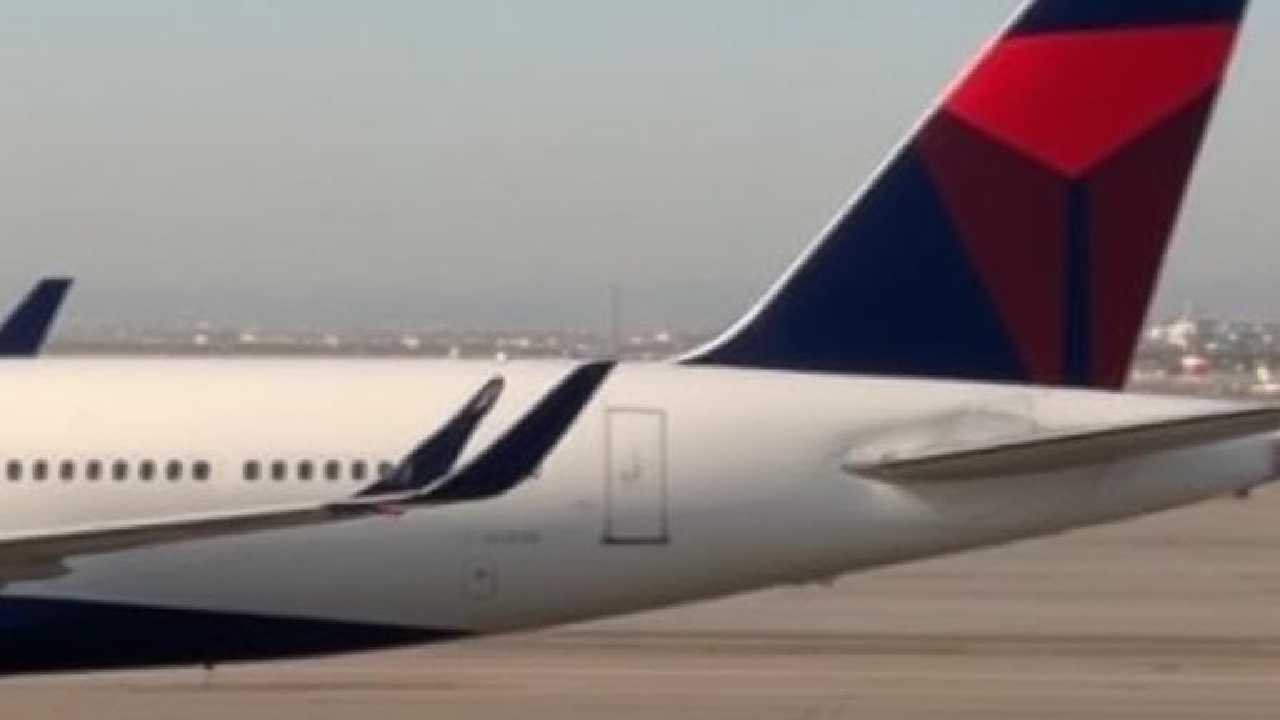Introduction
When passengers boarded Delta Flight DL275, they expected a smooth journey to their final destination. But mid-air decisions changed everything. News quickly broke: Delta Flight DL275 diverted LAX—and confusion took off just as fast as the aircraft.
In this article, we unpack everything you need to know about the flight diversion. From the causes and emergency protocols to passenger impact and airline response, we cover it all—clearly, accurately, and with SEO-rich content designed to inform and rank. If you’ve searched “Delta Flight DL275 diverted LAX,” you’re in the right place.
Why Delta Flight DL275 Was Diverted to LAX
Flight diversions are never routine, especially when they involve a major airline like Delta. In the case of Delta Flight DL275 diverted LAX, the diversion was prompted by an in-flight medical emergency involving a passenger in critical condition.
Pilots received real-time medical guidance from ground crews and made the decision to reroute the flight to Los Angeles International Airport (LAX), which offered the fastest access to emergency services. The diversion was executed with standard FAA protocols, minimizing risk while maximizing response efficiency.
Mid-air rerouting due to medical issues underscores how airlines prioritize passenger safety. Though inconvenient, such decisions reflect strict adherence to health and safety standards.
The Emergency Response Protocol Followed by Delta Airlines
When Delta Flight DL275 diverted LAX, it wasn’t a spontaneous move. The airline followed a pre-defined emergency response protocol.
Once the medical issue was reported by cabin crew, the flight deck immediately contacted Delta’s ground-based medical team. These professionals assess the urgency, recommend actions, and coordinate with local airports. In this case, LAX was chosen for its proximity and availability of advanced medical care.
The air traffic control (ATC) system cleared the flight’s emergency path, while Los Angeles Airport operations prepared for a priority landing. Emergency medical technicians (EMTs) were on standby before the plane touched down.
Such protocols ensure rapid care while keeping all passengers safe. Delta’s adherence to this system reduced the risk for the affected individual and the rest of the passengers.
Impact on Passengers and Connecting Flights
For travelers aboard the diverted aircraft, the change in flight path caused understandable disruption. Missed connections, layovers, and extended travel times became instant concerns when Delta Flight DL275 diverted LAX.
Delta, however, acted quickly. Gate agents and app alerts were used to notify passengers about rebooking options. Passengers received compensation in the form of meal vouchers, hotel stays, or flight credits depending on their final itinerary status.
Importantly, Delta’s mobile app and SMS notification systems helped travelers stay informed in real time, reducing chaos and confusion during the layover. Passengers praised the airline’s communication and swift action during the unexpected delay.
How Delta Airlines Communicated the Diversion to the Public
Transparency matters during any aviation incident. Delta made sure to issue official statements via Twitter, email notifications, and its website shortly after Delta Flight DL275 diverted LAX.
Spokespersons explained the situation clearly: a passenger needed urgent medical attention, and diverting the flight was the safest course of action. The updates were factual, brief, and focused on safety.
Public relations teams emphasized that all passengers were safe and that re-accommodation processes were underway. By controlling the narrative early, Delta minimized misinformation and maintained its reputation for operational integrity.
Safety Measures Implemented Onboard During the Incident
Flight attendants acted swiftly once the medical emergency surfaced. As soon as Delta Flight DL275 diverted LAX, onboard crew shifted into emergency response mode.
Medical kits were deployed. An onboard defibrillator was used. A trained passenger—coincidentally a nurse—assisted the crew until the aircraft landed. Oxygen masks were also provided to stabilize the patient.
Cabin crew followed FAA-mandated emergency medical training. Passengers noted the crew’s calm demeanor and professionalism throughout the crisis. Their response likely contributed to the patient’s survival.
Passenger Reactions and Social Media Buzz
When Delta Flight DL275 diverted LAX, passengers turned to social media. Some expressed concern. Others praised the professionalism. Twitter saw a flood of updates from passengers sharing live experiences, including images of the emergency landing and medical personnel boarding the aircraft.
One tweet read, “Scary moment on DL275, but crew handled it like pros. Respect.” Another added, “Delta got us down safe at LAX. Medical team was ready and efficient.”
The online narrative was largely supportive, and Delta’s social media team responded swiftly, thanking users and providing ongoing updates. The positive PR helped cushion any backlash from flight delays.
Comparison with Other Recent Flight Diversions
To place Delta Flight DL275 diverted LAX in context, it helps to compare similar incidents. Over the past year, major carriers have seen multiple diversions due to passenger illness, mechanical issues, or unruly behavior.
For example, a recent American Airlines flight from Dallas to Tokyo made an emergency stop in Seattle due to engine irregularities. Another United Airlines flight diverted due to a disruptive passenger threatening crew safety.
Compared to those, DL275’s situation was calmer and better managed. There was no panic, no mechanical failure, and no compromise to flight safety. The outcome reinforced Delta’s operational discipline in crisis scenarios.
Legal and Regulatory Oversight in Diversions
The Federal Aviation Administration (FAA) plays a central role in all mid-air reroutes. When Delta Flight DL275 diverted LAX, FAA controllers in the region took control of the aircraft’s path.
Every step of the diversion complied with aviation law. Delta submitted a post-diversion incident report detailing timing, communication, and passenger impact. Such reports help maintain industry-wide safety standards.
Passengers on diverted flights are also protected by air passenger rights. If delays exceed legal limits, compensation may apply. In this case, Delta preemptively offered goodwill gestures, exceeding minimum obligations.
What Happens After a Flight Diversion?
After Delta Flight DL275 diverted LAX, multiple follow-up actions took place. The patient was transported to a local hospital. The aircraft underwent a brief maintenance check. Crew members were debriefed, and remaining passengers were rebooked or boarded a continuing flight.
Delta’s operational team coordinated with LAX ground staff to clean, refuel, and reset the aircraft. The original flight crew had to observe rest requirements, so replacement staff took over the onward journey.
This post-diversion process ensures safety and readiness. Delta’s ability to reset quickly speaks volumes about its infrastructure and crisis management systems.
Lessons for Travelers: How to Handle a Flight Diversion
A diversion like Delta Flight DL275 diverted LAX reminds travelers to stay flexible and informed. Here’s how to cope if your flight gets rerouted:
- Stay calm. Flight crews are trained for emergencies.
- Use the airline’s app to get instant updates.
- Listen closely to crew announcements.
- Document your experience for potential compensation claims.
- Request help at the gate if connections are missed.
Travel insurance also helps cover unexpected costs like hotels and meals. Smart flyers prepare for the unpredictable—even if it’s rare.
Delta’s Reputation for Crisis Management
Incidents like Delta Flight DL275 diverted LAX test an airline’s readiness. Delta passed with high marks. Their crew, operations, communications, and customer service all worked in sync.
Industry analysts observed that Delta avoided chaos and confusion. Quick decisions, empathetic support, and prompt media communication earned the airline public praise.
Strong crisis management isn’t just about solving problems—it’s about building trust. Delta showed that safety remains its core promise.
Conclusion
The unexpected event of Delta Flight DL275 diverted LAX served as a powerful reminder that air travel, though tightly controlled, can face surprises. Thanks to Delta’s quick thinking, professional crew, and real-time coordination, what could have been chaos became a controlled emergency.
Whether you’re a frequent flyer or planning your next trip, knowing how airlines handle diversions can offer peace of mind. Delta did it right—and set a high standard for how emergency diversions should be handled.
A passenger suffered a serious medical emergency mid-flight. LAX was the closest airport with emergency facilities, prompting the diversion.
Delta has not released specific medical outcomes due to privacy concerns, but emergency personnel met the flight upon landing.
Yes. Delta offered rebooking, hotel stays, and meal vouchers depending on the length of delay and final destinations.
The average delay reported was around 4 to 6 hours. Some passengers were accommodated on later flights.
In many cases, yes. Airlines like Delta offer goodwill gestures, especially if you miss a connection or face long delays.
Stay calm, use the airline app for updates, listen to the crew, and keep your documents ready for rebooking and possible compensation.










